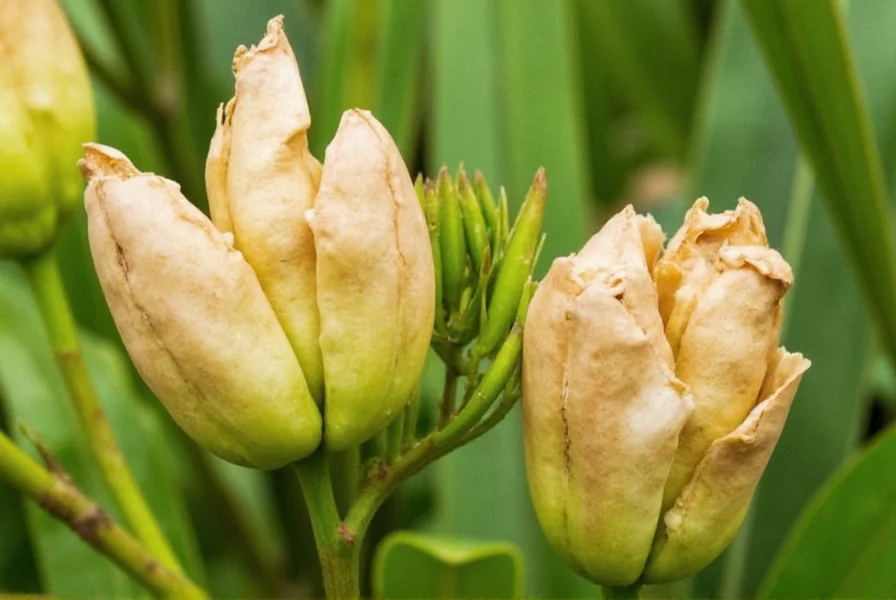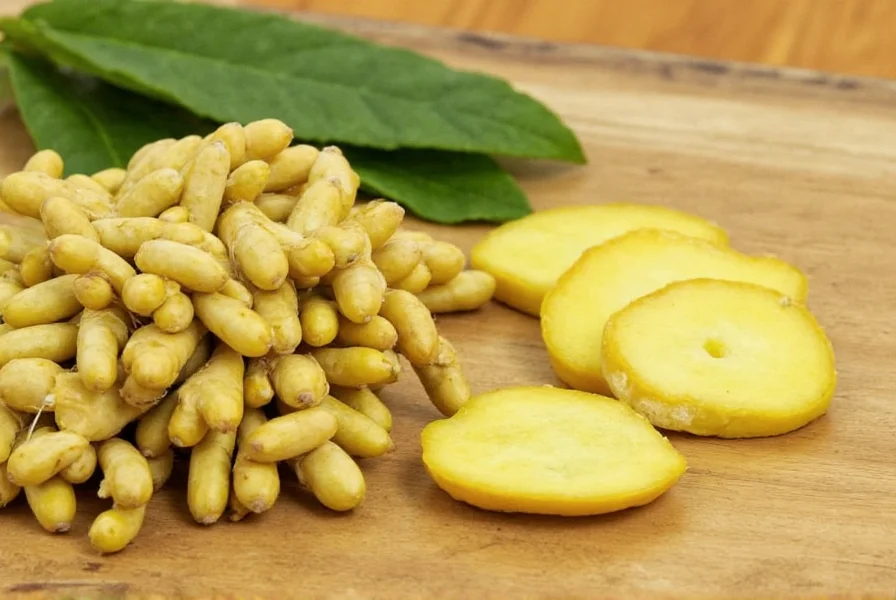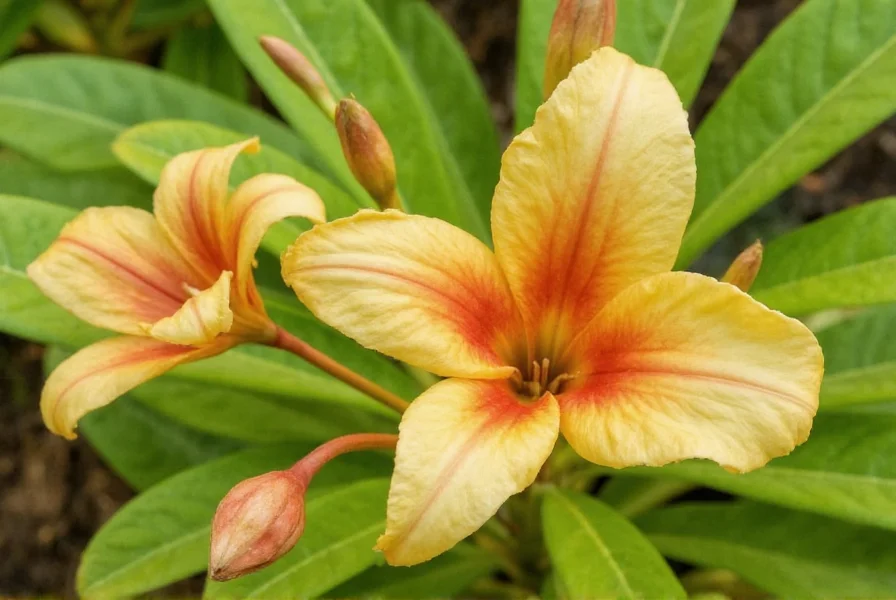Growing your own ginger is simpler than most gardeners realize and provides fresh, flavorful rhizomes for cooking and health benefits. Unlike many crops, ginger propagation starts with store-bought rhizomes rather than seeds, making it accessible for beginners. This tropical plant thrives in warm, humid conditions but can be cultivated in various climates with proper care techniques. Whether you have a backyard garden or just a sunny windowsill, you can produce your own ginger with the right approach.
Understanding Ginger as a Plant
Ginger (Zingiber officinale) is a tropical perennial plant grown for its aromatic rhizomes. Despite common misconception, ginger grows from rhizomes—underground stems—not true roots. These knobby rhizomes contain the growth buds that develop into new plants. Ginger requires a long, warm growing season of 8-10 months to reach full maturity. The plant features narrow green leaves that grow 2-3 feet tall and produces yellow-green flowers in optimal conditions, though many home growers focus solely on rhizome production.
Step-by-Step Guide to Growing Ginger
Selecting Quality Ginger Rhizomes
The foundation of successful ginger cultivation begins with selecting healthy rhizomes. Look for plump, firm pieces with multiple growth buds (the small eye-like protrusions). Organic ginger often works better than conventionally treated ginger, which may be sprayed with growth inhibitors. Choose rhizomes with a smooth texture and avoid any with wrinkles, mold, or soft spots. Each planting section should contain at least one growth bud and measure 1-2 inches in length.
Optimal Planting Time
Timing your ginger planting correctly significantly impacts your harvest. In tropical climates (zones 9-12), plant ginger rhizomes in early spring after the last frost. For cooler climates, start ginger indoors 4-6 weeks before your last expected frost date. The soil temperature should consistently stay above 70°F (21°C) for proper germination. Many successful growers plant ginger between February and April for fall harvests.
Soil Requirements and Preparation
Ginger thrives in loose, well-draining soil rich in organic matter. The ideal soil pH ranges from 5.5 to 6.5 (slightly acidic). Before planting, amend your garden soil with 2-4 inches of compost or well-rotted manure. For container growing, use a high-quality potting mix combined with perlite or vermiculite for improved drainage. Avoid heavy clay soils that retain too much moisture, as this leads to rhizome rot.
| Soil Component | Recommended Percentage | Purpose |
|---|---|---|
| Compost or Organic Matter | 30-40% | Provides nutrients and improves soil structure |
| Garden Soil or Potting Mix | 50-60% | Base growing medium |
| Perlite/Vermiculite | 10-15% | Enhances drainage and aeration |
Planting Process
Prepare your ginger rhizomes by cutting them into 1-2 inch pieces, ensuring each piece has at least one growth bud. Allow cut surfaces to dry for 24-48 hours to form a protective callus. Plant rhizomes 2-4 inches deep with growth buds facing upward. Space plants 8-12 inches apart in rows 18-24 inches apart. Water thoroughly after planting, then maintain consistent moisture without saturation. In containers, choose pots at least 12 inches deep with drainage holes.
Watering Requirements
Consistent moisture is critical for ginger growth, but overwatering causes rot. Water when the top inch of soil feels dry, typically 1-2 times per week depending on climate. During hot, dry periods, you may need to water more frequently. Reduce watering frequency as harvest approaches (last 2-3 weeks) to allow rhizomes to mature properly. Always use room-temperature water to avoid shocking the plants.
Light Requirements
Ginger prefers partial shade to full shade, especially in hotter climates. In temperate regions, provide 2-5 hours of morning sun with protection from intense afternoon rays. Indoors, place ginger near an east-facing window or use grow lights for 6-8 hours daily. Too much direct sunlight causes leaf scorching, while insufficient light results in weak, leggy growth. The ideal light condition mimics the dappled sunlight of tropical forest floors.
Temperature Considerations
Ginger requires warm temperatures between 70-90°F (21-32°C) for optimal growth. Temperatures below 50°F (10°C) will stunt growth or kill the plant. In cooler climates, grow ginger in containers that can be moved indoors when temperatures drop. Maintain humidity around 70-80% for best results. If growing indoors during winter, avoid placing plants near heating vents which create dry conditions.
Fertilizing Schedule
Feed ginger plants every 4-6 weeks during the growing season with a balanced, organic fertilizer. A 10-10-10 or similar NPK ratio works well. Alternatively, use compost tea or well-rotted manure for natural nutrient supplementation. Avoid high-nitrogen fertilizers which promote excessive leaf growth at the expense of rhizome development. Stop fertilizing 2-3 months before expected harvest to allow rhizomes to mature properly.
Growing Ginger in Different Environments
Outdoor Garden Growing
For garden cultivation, choose a location with rich, well-draining soil and partial shade. Prepare the planting area by loosening soil to 12 inches deep and incorporating organic matter. Plant ginger rhizomes after soil has warmed in spring. Mulch with 2-3 inches of straw or wood chips to retain moisture and regulate soil temperature. In regions with heavy rainfall, consider raised beds to prevent waterlogging. Monitor for pests like aphids and spider mites, treating organically if needed.
Container Growing Techniques
Container growing offers flexibility for those with limited space or cooler climates. Select pots at least 12 inches deep with adequate drainage. Use a high-quality potting mix amended with perlite. Place containers in partial shade locations, moving them indoors when temperatures drop below 50°F (10°C). Water when the top inch of soil dries out, being careful not to overwater. Fertilize monthly during active growth. Container-grown ginger often produces smaller but equally flavorful rhizomes.
Indoor Growing Methods
Indoor ginger cultivation allows year-round production. Start with a wide, shallow container (at least 8 inches deep) filled with well-draining potting mix. Place near an east-facing window or provide 6-8 hours of artificial light daily. Maintain humidity by placing pots on pebble trays with water or using a humidifier. Keep temperatures between 70-85°F (21-29°C). Indoor ginger grows more slowly but can be harvested continuously by taking only what you need.
Ginger Growth Timeline
Ginger follows a predictable growth pattern when conditions are optimal:
- Weeks 1-4: Rhizomes establish roots; no visible growth above soil
- Weeks 5-8: First shoots emerge; slow initial growth
- Months 3-6: Rapid leaf development; rhizomes begin forming
- Months 7-8: Rhizomes actively expand; plant reaches full height
- Months 9-10: Rhizomes mature; leaves begin yellowing
While you can harvest ginger earlier for tender 'spring ginger,' waiting the full 8-10 months produces larger, more flavorful rhizomes with better storage capability.
Harvesting Ginger Properly
Harvest ginger when leaves begin yellowing and dying back, typically 8-10 months after planting. For container plants, simply tip the pot and remove the entire plant. For garden plants, carefully dig around the plant perimeter to avoid damaging rhizomes. Gently remove soil from rhizomes and cut what you need, leaving some attached to the plant for continued growth. Harvest in the morning when rhizomes contain maximum moisture and flavor compounds.
Storing Harvested Ginger
After harvesting, cure ginger by air-drying for 2-3 days in a shaded, well-ventilated area. Store in one of these methods:
- Refrigeration: Place in a paper bag in the vegetable crisper (lasts 3-4 weeks)
- Freezing: Peel and freeze in airtight containers (lasts 6 months)
- Drying: Slice thinly and dehydrate for ginger powder (lasts 1 year)
- Preserving: Store in sherry or vinegar in the refrigerator (lasts 1 month)
For continuous harvest, cut only what you need from the rhizome cluster and replant the remainder with a growth bud.
Troubleshooting Common Ginger Growing Problems
Rhizome Rot
Cause: Overwatering or poor drainage Symptoms: Soft, mushy rhizomes with foul odor Solution: Improve soil drainage, reduce watering frequency, ensure proper air circulation
Yellowing Leaves
Cause: Overwatering, nutrient deficiency, or natural maturation Symptoms: Leaves turn yellow starting from edges Solution: Adjust watering, apply balanced fertilizer, or prepare for harvest if occurring late in season
Poor Rhizome Development
Cause: Insufficient warmth, inadequate nutrients, or premature harvesting Symptoms: Small, underdeveloped rhizomes Solution: Ensure proper temperature range, fertilize regularly, allow full 8-10 month growth period
Pests and Diseases
Common issues include aphids, spider mites, and fungal diseases. Treat organically with insecticidal soap for pests and neem oil for fungal issues. Prevent problems through proper spacing, good air circulation, and avoiding overhead watering.

Maximizing Your Ginger Harvest
For the best results when growing ginger at home, consider these professional tips:
- Start with multiple rhizome pieces to increase your chances of success
- Use a container with adequate depth to accommodate vertical rhizome growth
- Apply mulch to maintain consistent soil moisture and temperature
- Practice crop rotation if growing ginger in the same garden bed year after year
- Take cuttings from your healthiest plants for next season's propagation
- Keep a gardening journal to track planting dates, varieties, and results
Remember that ginger growth is slow initially but accelerates as the season progresses. Patience yields the best results, as fully matured ginger develops more complex flavors and higher concentrations of beneficial compounds like gingerol.

Frequently Asked Questions
Can I grow ginger from grocery store ginger?
Yes, you can grow ginger from grocery store rhizomes, though organic ginger typically works better as conventional ginger may be treated with growth inhibitors. Look for plump rhizomes with visible growth buds (the small eye-like protrusions). Soak the ginger in water overnight before planting to encourage sprouting. While success isn't guaranteed with store-bought ginger, many gardeners have successfully started plants this way.
How long does it take to grow ginger to harvest?
Ginger typically requires 8-10 months of warm growing conditions to reach full maturity for harvest. You can harvest 'spring ginger' after 4-5 months, which is more tender but less flavorful. For the largest, most flavorful rhizomes with best storage capability, wait the full 8-10 months until the leaves begin yellowing and dying back. The growth rate depends on temperature, with warmer conditions accelerating development.
Why are my ginger plant's leaves turning yellow?
Yellowing leaves can indicate several conditions: overwatering (most common cause), nutrient deficiency, natural maturation process, or temperature stress. If occurring early in the growing season, check your watering practices and ensure proper drainage. If happening late in the season (around month 8-10), yellowing likely signals that your ginger is ready for harvest. Adjust care practices accordingly based on the growth stage and other symptoms present.
Can ginger be grown indoors year-round?
Yes, ginger can be successfully grown indoors year-round with proper conditions. Use a wide, shallow container (at least 8 inches deep) with well-draining potting mix. Place near an east-facing window or provide 6-8 hours of artificial light daily. Maintain temperatures between 70-85°F (21-29°C) and humidity around 70-80%. Water when the top inch of soil dries out. Indoor ginger grows more slowly but can be harvested continuously by taking only what you need while leaving the plant to continue growing.











 浙公网安备
33010002000092号
浙公网安备
33010002000092号 浙B2-20120091-4
浙B2-20120091-4